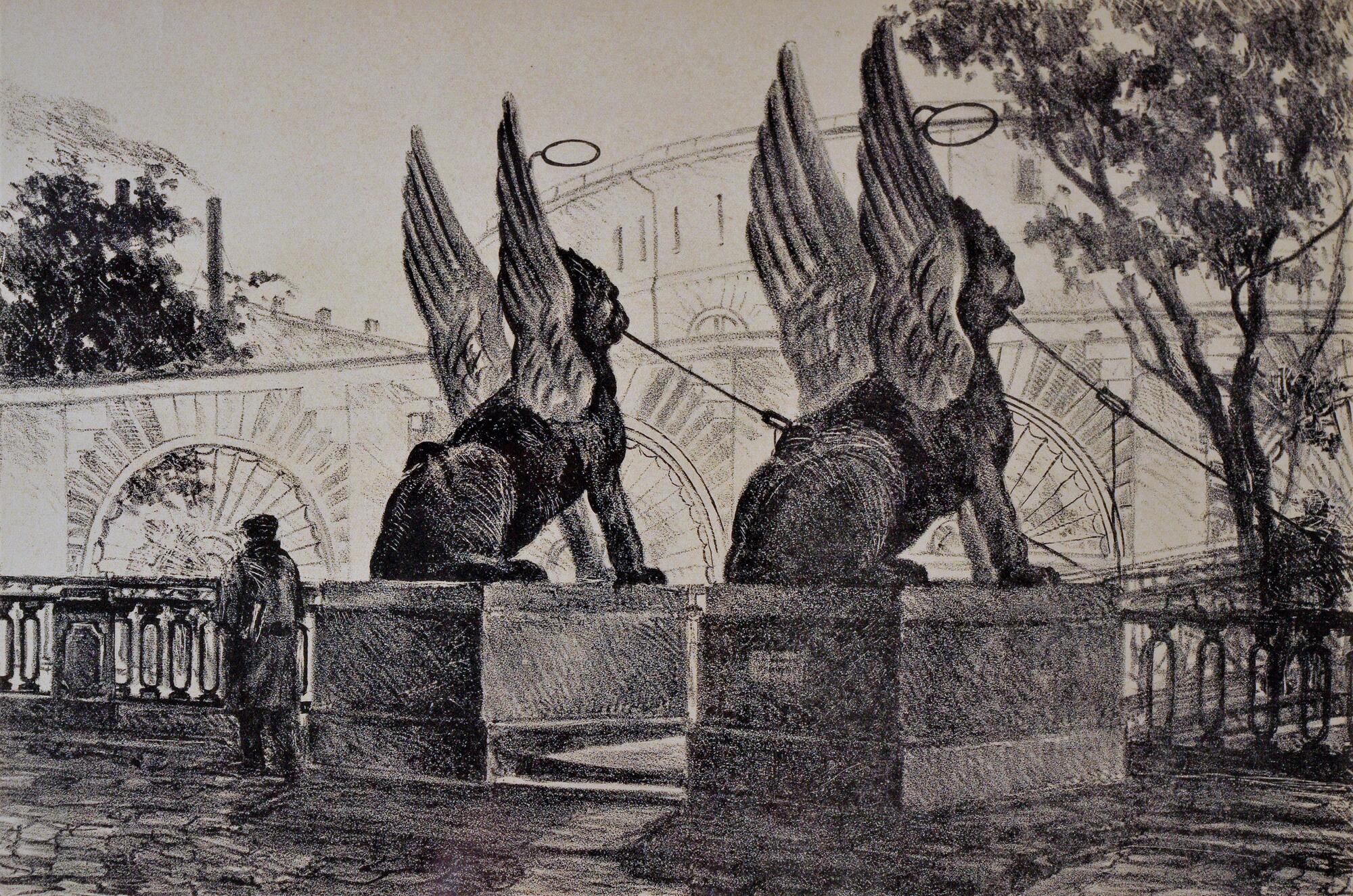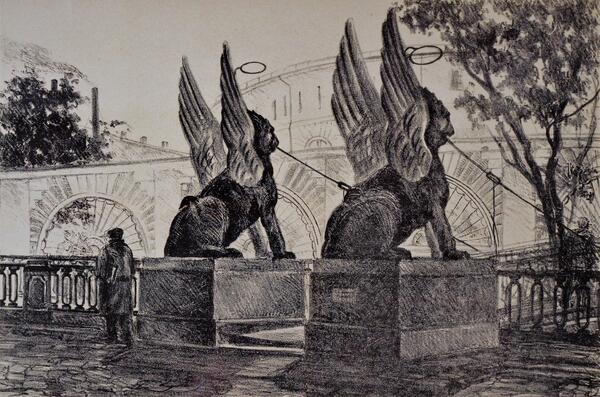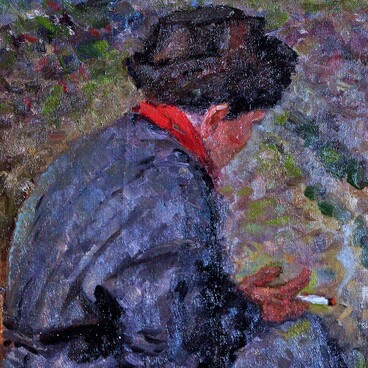Alexey Uspensky was a painter, graphic artist and teacher. He was born in St. Petersburg in 1892, but spent his childhood in Pskov, where his father served. In 1917, Uspensky graduated from the Department of Decorative Painting at the Central Technical Drawing School of Baron A.L. Stieglitz in St. Petersburg. After graduation, he headed the fine arts section of the Public Education Department of the 1st district of Petrograd, and then led the city of art school.
In the 1930s, Uspensky taught: first at the Institute of Proletarian Fine Arts, then at the Institute of Painting, Sculpture and Architecture of the All-Russian Academy of Arts, at the Institute of the Peoples of the North. At the same time, the artist studied lithography — a method of printing in which paint was transferred under pressure from a mold to paper.
The art historian Alexandra Strukova described Uspensky as an interesting master of arts and crafts, a teacher, “a bit of a painter, more of a graphic artist with a gift for decorativeness”. On the lithograph from museum collection, the artist depicted the landmark of his home city — the suspended Bank Bridge, which span the Catherine Canal (now the Griboyedov Canal) in St. Petersburg.
The bridge became famous for its unusual design — four winged lions held it on chains. Their wings were cast in copper and covered in gilt, which reflected the sunrays. Near the bridge, Uspensky depicted a passerby in a cap and a coat with a high collar, who hides a package under his arm. The artist created the lithograph in the 1920s and 1940s — the exact time is unknown.
At the end of the 1930s, Uspensky headed the porcelain painting workshop at the Leningrad porcelain factory named after M. V. Lomonosov, and worked in the experimental shop of artistic glass at the Leningrad mirror factory. The artist created design sketches for vases, jugs and other glass vessels made of colorless, illuminated and colored glass. Products of the experimental shop, including those of Uspensky, were shown in 1940 at the exhibition in the Leningrad House of Architect.
When the war started, Alexey Uspensky was in Leningrad. During an enemy attack, on November 8, 1941, the artist was killed. His friend Nikolay Tyrsa, a painter, wrote,
In the 1930s, Uspensky taught: first at the Institute of Proletarian Fine Arts, then at the Institute of Painting, Sculpture and Architecture of the All-Russian Academy of Arts, at the Institute of the Peoples of the North. At the same time, the artist studied lithography — a method of printing in which paint was transferred under pressure from a mold to paper.
The art historian Alexandra Strukova described Uspensky as an interesting master of arts and crafts, a teacher, “a bit of a painter, more of a graphic artist with a gift for decorativeness”. On the lithograph from museum collection, the artist depicted the landmark of his home city — the suspended Bank Bridge, which span the Catherine Canal (now the Griboyedov Canal) in St. Petersburg.
The bridge became famous for its unusual design — four winged lions held it on chains. Their wings were cast in copper and covered in gilt, which reflected the sunrays. Near the bridge, Uspensky depicted a passerby in a cap and a coat with a high collar, who hides a package under his arm. The artist created the lithograph in the 1920s and 1940s — the exact time is unknown.
At the end of the 1930s, Uspensky headed the porcelain painting workshop at the Leningrad porcelain factory named after M. V. Lomonosov, and worked in the experimental shop of artistic glass at the Leningrad mirror factory. The artist created design sketches for vases, jugs and other glass vessels made of colorless, illuminated and colored glass. Products of the experimental shop, including those of Uspensky, were shown in 1940 at the exhibition in the Leningrad House of Architect.
When the war started, Alexey Uspensky was in Leningrad. During an enemy attack, on November 8, 1941, the artist was killed. His friend Nikolay Tyrsa, a painter, wrote,




